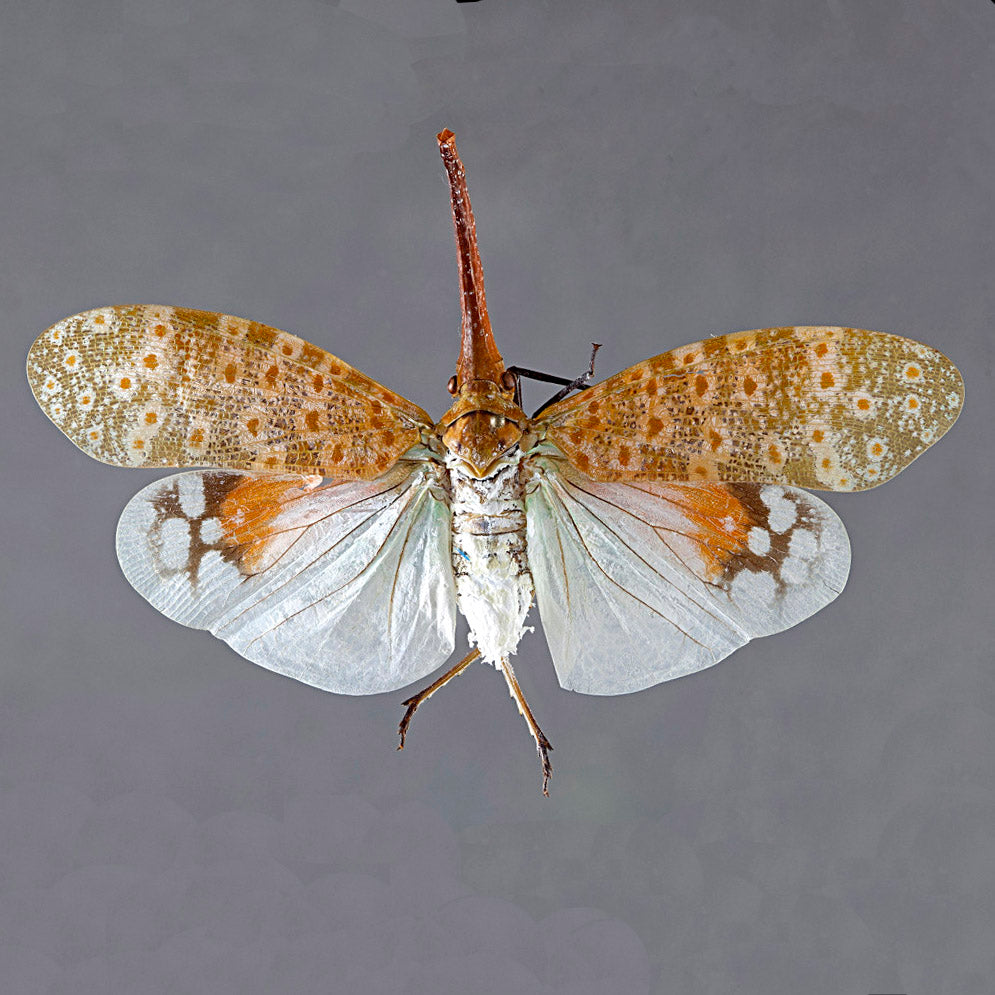If you had asked me if I liked bugs when I was a kid, I would have looked at you suspiciously. I mean, a potato bug (Jerusalem cricket), once scared me half to death, but of course I scooped up the occasional ladybug, and monarch and swallowtail butterflies would always catch my eye. But for the most part my heart belonged to the furry and feathered creatures of the world.
Exhibit A:

Exhibit B:

Closeup:

I didn’t always have the steadiest hand, but I did always love egregiously bright color and little details. So insects were actually a natural progression. It just took me awhile to discover them!
That’s the thing about a lot of insects – they can be easy to miss. I realized this after college when I got a job at the San Francisco insect zoo. I started to realize that not only were the vast majority of insects harmless, they were also more interesting and beautiful that I ever realized.
When I got a job as a curatorial assistant in the Entomology department at the California Academy of Sciences I started spending a lot of time looking at insect specimens under a microscope trying to sort them into orders and families. I saw a lot of what entomologists call LBB’s, or “Little Brown Bugs” because they are so ubiquitous. But under a microscope they are anything but ordinary. Some had cryptic coloration with intricate patterning, some had fascinating or humorous characteristics (there are species of tiny moths that have what look like bangs), and some were bright and colorful close up.
Take a look at this weevil from Madagascar. It was small and looked brown from a distance. Under the microscope it revealed a veritable disco ball of shimmering light, like someone smacked it with a fistful of glitter.

And this beetle specimen in the family Eucnemidae (false click beetles). It was pulled from an assortment of insects collected on an Academy expedition to the Philippines. Small and slightly nondescript from a distance, closeup it looks like it’s covered in the softest most luxurious golden fuzz.
It was my excitement about all of these amazing species I was seeing that led me to dust off my art supplies and start drawing seriously again for the first time since high school. I couldn’t believe that so much color and detail could be crammed onto such small little animals! And I wanted to share this inspiration with others through photography and art.
One of my all time faves are Fulgorid Planthoppers (family Fulgoridae). They are an odd group of insects that have big butterfly-like wings, but are actually more closely related to cicadas, leafhoppers, and aphids. I thought this specimen from Ecuador had the most beautifully patterned wings. It was small too, only about half an inch.
And here is another, larger (about 4 inches!), species of Fulgorid plant hopper from Central America:
My two favorite mediums have always been prismacolor markers and colored pencils, and I found the pencils in particular were great for capturing little details of insect wings, and for layering lots of colors to achieve some of the complex shades found on insect specimens. Some colors are really hard to completely recreate. These longhorn beetles from Cameroon are the richest shades of mint green and goldeny buttery yellow.
And there are many, many more! The Academy has about 17 million insect and arachnid specimens, representing about 250 thousand species, or about a quarter of all insect and arachnid species currently known to science. It’s a fantastic resource not just for scientists, but for artists as well.
I’ve never lost my love of cats and birds big and small, and I still draw them constantly! But my perspective has been expanded to include microfauna, and has deepened my admiration for the diversity of life on this planet. There is something kind of neat about knowing there are all these fantastic creatures everywhere, even if we don’t necessarily notice them or can’t even see them without looking very very closely. Is there a metaphor for life in there somewhere?? Possibly!
So, whether you are a lifelong bug enthusiast, or are only just noticing that they are *almost* as cool as cats, I hope they inspire and make you happy too.






